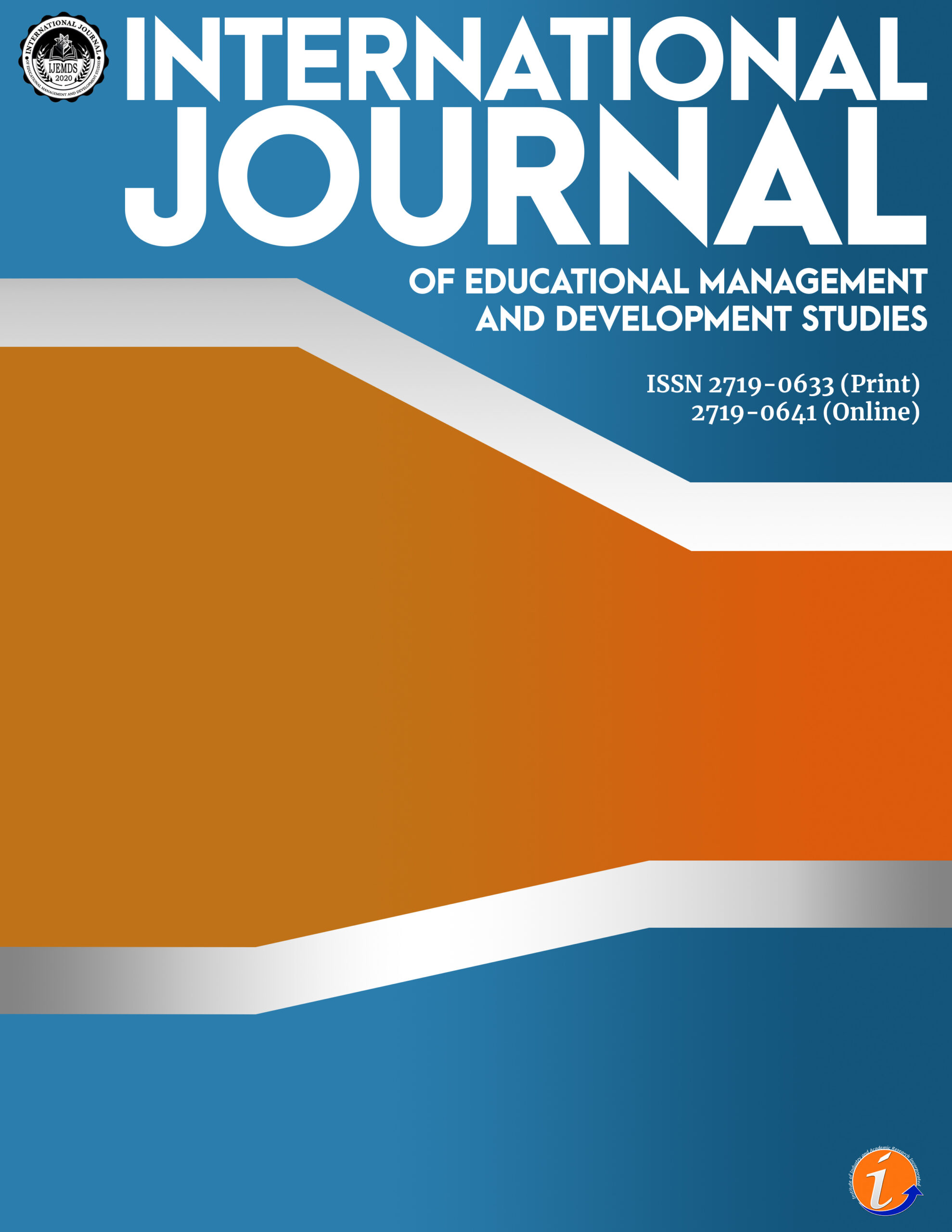The paper evaluated the impact of the interactive conceptual instruction in studying physics at the basic education high school level. The research used an experimental design through the pretest and posttest control group. The randomly selected samples were high schools students from Sagaing, Mandalay and Nay Pyi Taw regions. The ANCOVA results showed a statistical significant difference between the performance of the students who received interactive conceptual instruction and those who did not. Moreover, the qualitative data also supported the quantitative findings. The research findings proved that interactive conceptual model has positive contribution to the teaching of physics at the high school level. As the study explored effective ways to learn physics, the results were valuable inputs in the teaching and learning. It serves as a guide in constructing interactive conceptual instruction lessons in the effective teaching of physics.
interactive conceptual instruction, physics, concept, interactive
Dr. Padauk Win. Corresponding Author. Lecturer, Methodology Department, Sagaing University of Education
Dr. Swe Swe Nyunt. Professor, Methodology Department, Sagaing University of Education
Alice, J. (2011). Effects of teaching-with-analogy on academic performance and retention of evolution concepts among Nigeria certificate ine Biology students. Retrieved April, 5, 2017, from http://kubanniabu.edu.ng>jspui>bitstream
Atanasescu, C. I., & Dumitru, F. (2005). Interactive teaching-learning methods in the in the interdisplinary approach of natural science from the mentor-teacher’s. Retrieved August, 7, 2016 from http://www.upit.ro/…/4820/paper-2.pd.
Barlett, S. & Burton, D. (2012). Introduction to education studies (3rd ed.). Great Britain by Ashford Colour Press Ltd.
Biggers, M. S. (2013). Elementary teachers’ ideas about, planning for, and Implementation of learner-directed and teacher directed inquiry: a mixed methods study. University of Iowa. Retrieved June 8, 2016 from http://ir.uiowa.edu/etd/2438
Buabeng, I. (2015). Teaching and learning of physics in New Zealand and high school. Retrieved August 1, 2016 from http://ir.canterbury.ac.nz/handle/10092/11396
Dayal, D. (2012). Modern methods of teaching physics. New Delhi: APH Publishing Corporation.
Gay, L .R. & Mills, G. E. (2016). Educational research: competencies for analysis and application. (11th ed.). New York: Pearson Education Limited.
Gazzaniga, M. S. , Ivry, R. B. & Mangum, G. R. (2002). Cognitive neuroscience: The biology of the mind. W.W.Norton & Company, Inc.
Khwanda, M. N. (2009). The impact of interactive-engagement models in the teaching and learning of physics to first year education students. Retrieved July 26, 2016 from http://www.uir.unisa.acza/…/dissertation-%20Khwan
Khwanda, M. N., Kriek, J. & Bassom, I. (n.d.). Interactive engagement models in pre-service science teacher understanding of mechanics. Retrieved August 7, from http://www.uir.unisa.ac.za
Khin Zaw, Dr. (2001). Theoretical pedagogy. PhD Programme Course Material. Yangon Institute of Education, Myanmar.
Lasky, B. A., Otto, M.A.& Morrish, W.(2006). Interactive teaching methodologies. (1st ed.). Community Legal Advisor Educator Mannual- Draft manual. Open Society Justice Initiative.
Ministry of Education. (2014). Grade nine physics textbook. Myanmar: Basic Education Curriculum, Syllabus and Textbook Committee.
Savinainen, A., & Scott, P. (2002). The force concept inventory: A tool for monitoring student learning. Physics Education, 37(1), 45-52.
Siddiqui, M.H. (2009). Advanced educational psychology. New Delhi: Balaji Offset.
Smith, T. (2001). Oxford dictionary. (10th ed.). Oxford University Press
Walter, E. (2008). Cambridge advanced learner’s dictionary. (3rd ed.). Cambridge University Press.
Cite this article:
Padauk Win & Swe Swe Nyunt (2021). The impact of interactive conceptual instruction on students in high school physics. International Journal of Educational Management and Development Studies, 2(4), 1-22. https://doi.org/10.53378/352075
License:
![]()
This work is licensed under a Creative Commons Attribution (CC BY 4.0) International License.










